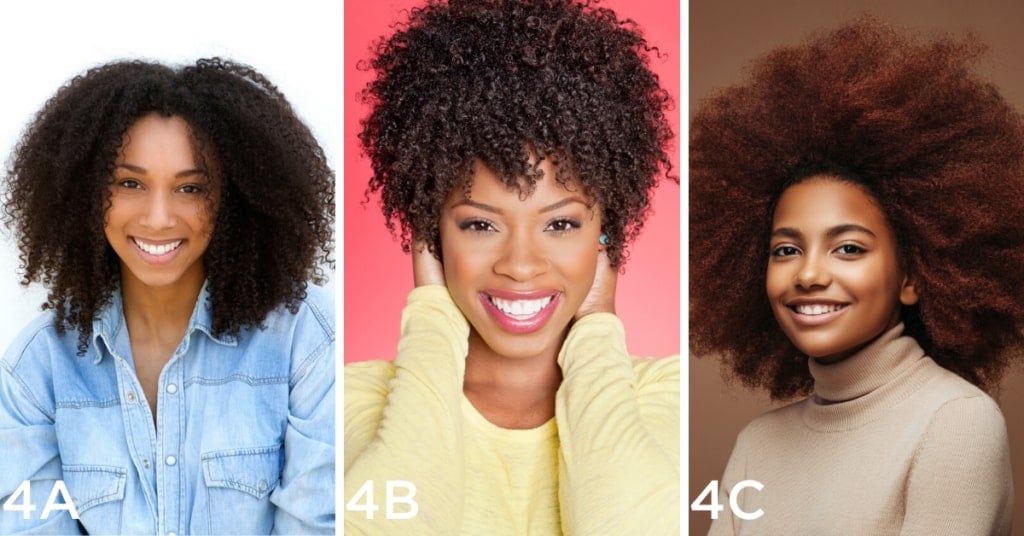Deciphering your curl type can be very confusing considering everyone’s uniqueness. However, learning the best ways to take care of your hair goes a long way, saving you time, money and keeping your hair healthy.
When it comes to hair type 4, there’s a lot to cover in terms of texture.
The way your current curl type can be determined is by observing the shape of the hair follicle and root volume. The most controversy around narrowed hair types comes when people cannot identify with either type of curl.
That is totally understandable because one head can have more than one texture in its hair strands. You can easily be a combination of 3B, 4A, and 4C or any other mix, no one girl and her curls are the same!
For each 1 to 4 hair types, all assigned subtypes from A to C are based on the width of the strand of a curl. Starting from A which would be considered the wider pattern and closing with C which is the tightest in the group.

Getting into the number four, we are describing coils. You will find that type 4 usually requires more hydration because of its spongy texture caused by the volume of the roots.
The deep moisture is not only necessary for the stylish looks but more so to avoid knots and to make it easier for everyday casual styling. Type 4A is usually very dense and its coil can go around a sushi stick. Type 4B has a sharp Z aspect and it maintains high density. Sub-type C has the tightest and almost indiscernible coils due to their interlinked aspect.
Hair Care For Hair Type 4
As it’s very unlikely to encounter oily hair due to the dryness-prone type, hydration must be the utmost priority. There are chances problematic scalp can be encountered and for those times, solutions must be applied to the scalp only, avoiding damage to the actual length.
Coils require all the moisture they can get to stay healthy due to their shape, and excessive shampooing can leave your hair dull and dry. Obviously, you can wash your hair in the shower without shampooing, and if you are used to washing your hair in the shower daily, then you can apply shampoo and conditioner one day, and the next day only conditioner, alternating these options.
Shea Butter is highly recommended along with hair puddings and hydrating oils. Pre-shampooing treatments are always welcome and help prevent damage and additional dryness during the washing stage. Conditioners are almost never enough, and they must be accompanied by leave-in treatments, rich masks, and curling creme.
Curly hair should be combed when wet and when applying the specific conditioner or mask. If you can, avoid combing or brushing until the next wash.
Rinse your conditioner or mask with plenty of hot water to help well-defined curls contour. Do not rinse curly hair with cold water, because the low temperature of the water tends to fill the cuticle and strengthen it, which leads to the wire-effect, unmanageable of curls.
Styling And Managing Textures
Fortunately, curly hair has “body” naturally and the easiest way to manage it is through adding hydrating products and avoiding the heat.
Excessive heat can cause hair breakage and cause curls to lose their natural shape and elasticity, making them look lifeless. If you notice this, avoid using any kind of heat-based styling tool (including the diffuser). For a week or two, focus on rehydrating the curls to help them regain their elasticity.
Source: Hair
Understanding Hair Type 4: Are you a hair type 4a, 4b or 4c?
